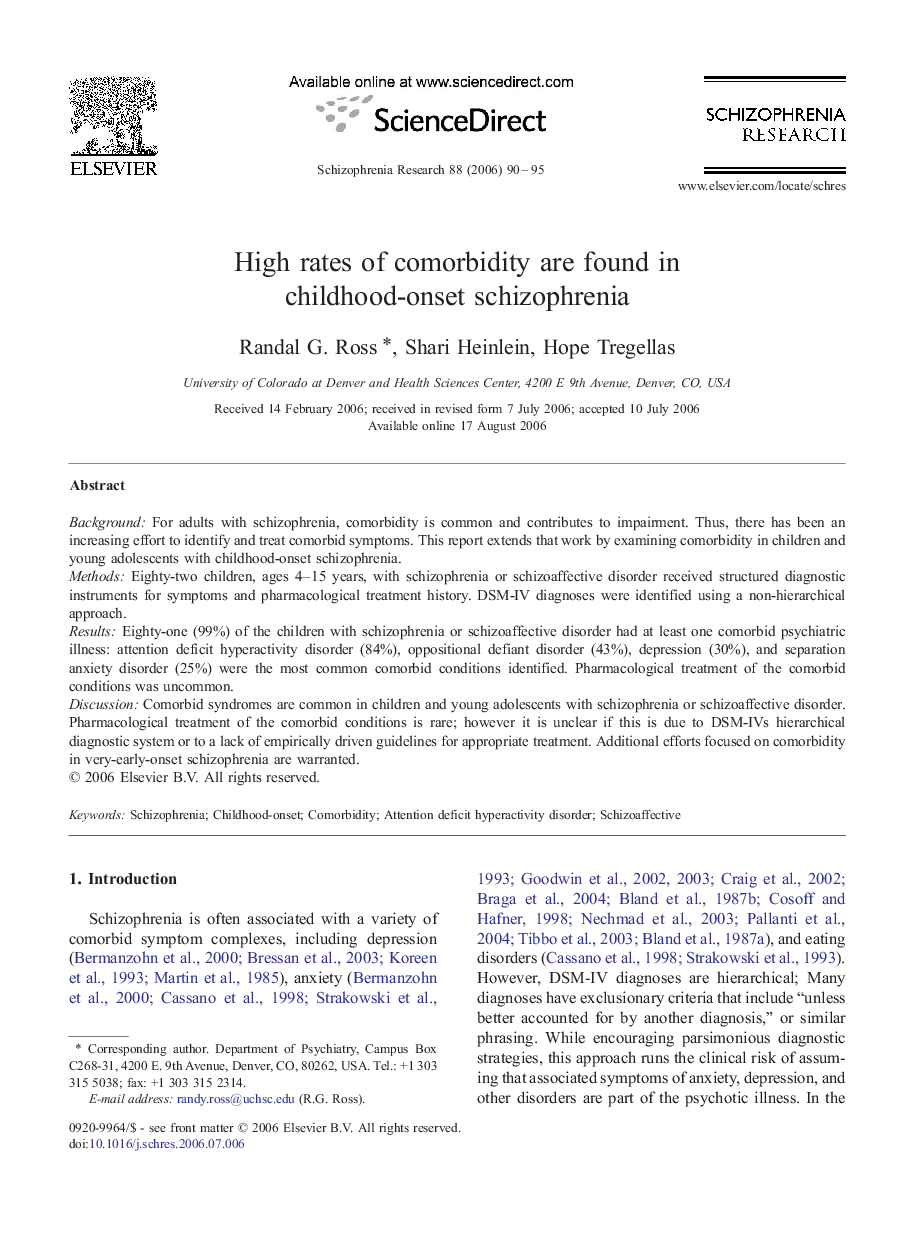| Article ID | Journal | Published Year | Pages | File Type |
|---|---|---|---|---|
| 341736 | Schizophrenia Research | 2006 | 6 Pages |
BackgroundFor adults with schizophrenia, comorbidity is common and contributes to impairment. Thus, there has been an increasing effort to identify and treat comorbid symptoms. This report extends that work by examining comorbidity in children and young adolescents with childhood-onset schizophrenia.MethodsEighty-two children, ages 4–15 years, with schizophrenia or schizoaffective disorder received structured diagnostic instruments for symptoms and pharmacological treatment history. DSM-IV diagnoses were identified using a non-hierarchical approach.ResultsEighty-one (99%) of the children with schizophrenia or schizoaffective disorder had at least one comorbid psychiatric illness: attention deficit hyperactivity disorder (84%), oppositional defiant disorder (43%), depression (30%), and separation anxiety disorder (25%) were the most common comorbid conditions identified. Pharmacological treatment of the comorbid conditions was uncommon.DiscussionComorbid syndromes are common in children and young adolescents with schizophrenia or schizoaffective disorder. Pharmacological treatment of the comorbid conditions is rare; however it is unclear if this is due to DSM-IVs hierarchical diagnostic system or to a lack of empirically driven guidelines for appropriate treatment. Additional efforts focused on comorbidity in very-early-onset schizophrenia are warranted.
